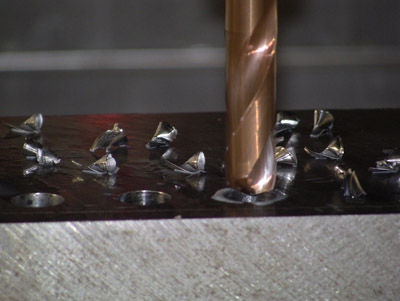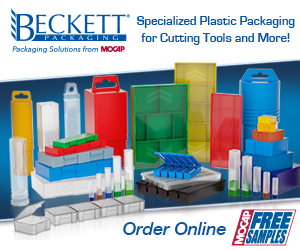
Developed with optimal performance and value in mind, the new Universal Drill from Niagara Cutter is a solid-carbide drill that combines a special multi-purpose geometry with advanced coating technology to reportedly provide reliable, predictable tool life and a low cost per hole, especially in high-volume production environments.
The Universal Drill's rigid four-facet point geometry provides excellent centering capability, maintains an IT8/9 hole tolerance and is easy to regrind. A polished AlCrN coating gives the drill high abrasion resistance, toughness and good chip evacuation capabilities.
Well suited for holemaking applications across all industry segments and a wide scope of workpiece materials, including steels, stainless steels and cast irons, the versatility of the Universal Drill helps reduce required tooling inventories.
Available drill diameter sizes range from 3mm to 20mm with increments of 0.1mm. For efficient chip evacuation, the 5 x D and 3 x D length drills with cylindrical shanks offer the option of through-tool coolant capability. All Universal Drills are compatible with Seco shrink-fit holders, hydraulic chucks and precision collet chucks.
Contact Details
Related Glossary Terms
- cast irons
cast irons
Cast ferrous alloys containing carbon in excess of solubility in austenite that exists in the alloy at the eutectic temperature. Cast irons include gray cast iron, white cast iron, malleable cast iron and ductile, or nodular, cast iron. The word “cast” is often left out.
- centering
centering
1. Process of locating the center of a workpiece to be mounted on centers. 2. Process of mounting the workpiece concentric to the machine spindle. See centers.
- collet
collet
Flexible-sided device that secures a tool or workpiece. Similar in function to a chuck, but can accommodate only a narrow size range. Typically provides greater gripping force and precision than a chuck. See chuck.
- coolant
coolant
Fluid that reduces temperature buildup at the tool/workpiece interface during machining. Normally takes the form of a liquid such as soluble or chemical mixtures (semisynthetic, synthetic) but can be pressurized air or other gas. Because of water’s ability to absorb great quantities of heat, it is widely used as a coolant and vehicle for various cutting compounds, with the water-to-compound ratio varying with the machining task. See cutting fluid; semisynthetic cutting fluid; soluble-oil cutting fluid; synthetic cutting fluid.
- stainless steels
stainless steels
Stainless steels possess high strength, heat resistance, excellent workability and erosion resistance. Four general classes have been developed to cover a range of mechanical and physical properties for particular applications. The four classes are: the austenitic types of the chromium-nickel-manganese 200 series and the chromium-nickel 300 series; the martensitic types of the chromium, hardenable 400 series; the chromium, nonhardenable 400-series ferritic types; and the precipitation-hardening type of chromium-nickel alloys with additional elements that are hardenable by solution treating and aging.
- tolerance
tolerance
Minimum and maximum amount a workpiece dimension is allowed to vary from a set standard and still be acceptable.









